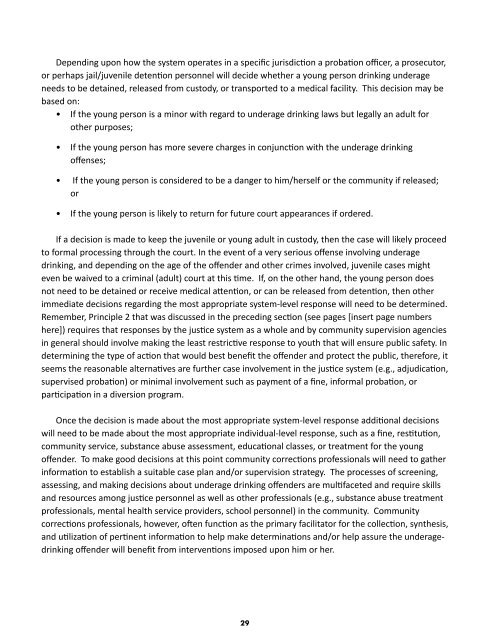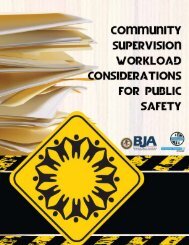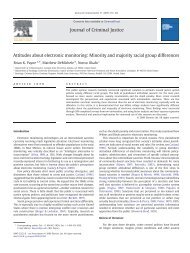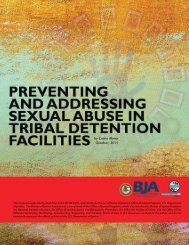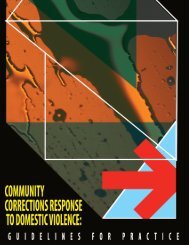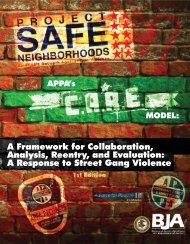Intervention Principles and Practice Guidelines for - Underage ...
Intervention Principles and Practice Guidelines for - Underage ...
Intervention Principles and Practice Guidelines for - Underage ...
You also want an ePaper? Increase the reach of your titles
YUMPU automatically turns print PDFs into web optimized ePapers that Google loves.
Depending upon how the system operates in a specific jurisdiction a probation officer, a prosecutor,<br />
or perhaps jail/juvenile detention personnel will decide whether a young person drinking underage<br />
needs to be detained, released from custody, or transported to a medical facility. This decision may be<br />
based on:<br />
• If the young person is a minor with regard to underage drinking laws but legally an adult <strong>for</strong><br />
other purposes;<br />
• If the young person has more severe charges in conjunction with the underage drinking<br />
offenses;<br />
• If the young person is considered to be a danger to him/herself or the community if released;<br />
or<br />
• If the young person is likely to return <strong>for</strong> future court appearances if ordered.<br />
If a decision is made to keep the juvenile or young adult in custody, then the case will likely proceed<br />
to <strong>for</strong>mal processing through the court. In the event of a very serious offense involving underage<br />
drinking, <strong>and</strong> depending on the age of the offender <strong>and</strong> other crimes involved, juvenile cases might<br />
even be waived to a criminal (adult) court at this time. If, on the other h<strong>and</strong>, the young person does<br />
not need to be detained or receive medical attention, or can be released from detention, then other<br />
immediate decisions regarding the most appropriate system-level response will need to be determined.<br />
Remember, Principle 2 that was discussed in the preceding section (see pages [insert page numbers<br />
here]) requires that responses by the justice system as a whole <strong>and</strong> by community supervision agencies<br />
in general should involve making the least restrictive response to youth that will ensure public safety. In<br />
determining the type of action that would best benefit the offender <strong>and</strong> protect the public, there<strong>for</strong>e, it<br />
seems the reasonable alternatives are further case involvement in the justice system (e.g., adjudication,<br />
supervised probation) or minimal involvement such as payment of a fine, in<strong>for</strong>mal probation, or<br />
participation in a diversion program.<br />
Once the decision is made about the most appropriate system-level response additional decisions<br />
will need to be made about the most appropriate individual-level response, such as a fine, restitution,<br />
community service, substance abuse assessment, educational classes, or treatment <strong>for</strong> the young<br />
offender. To make good decisions at this point community corrections professionals will need to gather<br />
in<strong>for</strong>mation to establish a suitable case plan <strong>and</strong>/or supervision strategy. The processes of screening,<br />
assessing, <strong>and</strong> making decisions about underage drinking offenders are multifaceted <strong>and</strong> require skills<br />
<strong>and</strong> resources among justice personnel as well as other professionals (e.g., substance abuse treatment<br />
professionals, mental health service providers, school personnel) in the community. Community<br />
corrections professionals, however, often function as the primary facilitator <strong>for</strong> the collection, synthesis,<br />
<strong>and</strong> utilization of pertinent in<strong>for</strong>mation to help make determinations <strong>and</strong>/or help assure the underagedrinking<br />
offender will benefit from interventions imposed upon him or her.<br />
29


